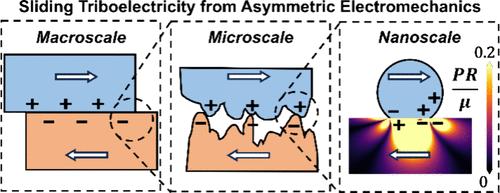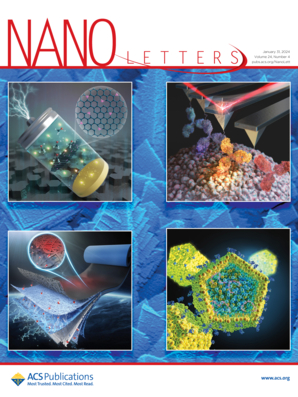是什么让 "Tribo "成为 "Triboelectricity"?
IF 9.6
1区 材料科学
Q1 CHEMISTRY, MULTIDISCIPLINARY
引用次数: 0
摘要
科学界一个永恒的问题是,为什么滑动在静电的三电产生中起着重要作用?我们在此提供一个植根于成熟科学的一般性解释。当滑动发生时,由于弹性剪切力的作用,对称性会被打破,因此滑动体的前部与后部会经历不同的弹性应变。因此,前后的极化和相关电荷不一样,两者之间的差异导致电流流动,类似于飞机机翼上下的气压差异导致升力。具体计算结果与之前的尺寸和形状依赖性实验测量结果非常吻合,与实验电流测量结果在数量上也非常吻合。本文章由计算机程序翻译,如有差异,请以英文原文为准。

What Puts the “Tribo” in Triboelectricity?
An enduring question in science has been why sliding plays a major role in the triboelectric generation of static electricity–the “tribo” in triboelectricity. We provide here a general explanation which is rooted in established science. When sliding is taking place, there is symmetry breaking due to elastic shear, so the front of the sliding body experiences different elastic strains from the back. Consequently the polarization and associated charges at the front and back are not the same, and the difference between the two leads to current flow similar to the difference in air pressure above and below a plane’s wing leading to lift. Specific calculations are provided which show good agreement with prior experimental measurements of size and shape dependencies, and reasonable quantitative agreement with experimental current measurements.
求助全文
通过发布文献求助,成功后即可免费获取论文全文。
去求助
来源期刊

Nano Letters
工程技术-材料科学:综合
CiteScore
16.80
自引率
2.80%
发文量
1182
审稿时长
1.4 months
期刊介绍:
Nano Letters serves as a dynamic platform for promptly disseminating original results in fundamental, applied, and emerging research across all facets of nanoscience and nanotechnology. A pivotal criterion for inclusion within Nano Letters is the convergence of at least two different areas or disciplines, ensuring a rich interdisciplinary scope. The journal is dedicated to fostering exploration in diverse areas, including:
- Experimental and theoretical findings on physical, chemical, and biological phenomena at the nanoscale
- Synthesis, characterization, and processing of organic, inorganic, polymer, and hybrid nanomaterials through physical, chemical, and biological methodologies
- Modeling and simulation of synthetic, assembly, and interaction processes
- Realization of integrated nanostructures and nano-engineered devices exhibiting advanced performance
- Applications of nanoscale materials in living and environmental systems
Nano Letters is committed to advancing and showcasing groundbreaking research that intersects various domains, fostering innovation and collaboration in the ever-evolving field of nanoscience and nanotechnology.
 求助内容:
求助内容: 应助结果提醒方式:
应助结果提醒方式:


